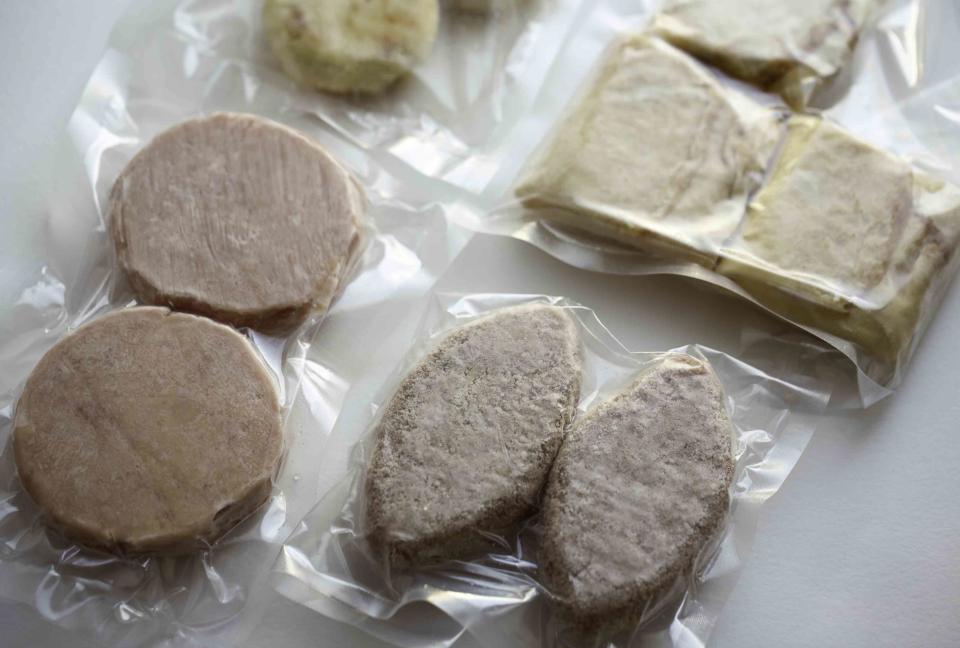Can You Refreeze Food Once It’s Thawed?
No one wants to waste a perfectly good dinner, but there are some rules to keep in mind when refreezing meat, fish, and other perishable foods — here’s everything you need to know.

Igor Ploskin / Getty Images
You took that beautiful fillet of salmon out of the freezer, then made last-minute dinner plans at a restaurant. Can you refreeze it to enjoy another night? The short answer is yes, but there are a few things to keep in mind.
First of all, the quality of any food is affected when you freeze it for a second time. That’s because slow freezing introduces large ice crystals that damage the cells of the food once it’s thawed — the culprit behind “mushy” meat or fish. Food also loses moisture during thawing, which can result in, say, a chicken breast losing some of its juiciness. You’ll ideally want to freeze food quickly and without disruptions.
Of course, life happens, and a change of plans doesn’t mean you have to waste your food and money. But before you (re)open the freezer, you should consider some important food safety guidelines. Food enters what the U.S. Department of Agriculture (USDA) calls the “danger zone” at a temperature between 40°F (the maximum temperature of your refrigerator) and 140°F. Because bacteria can grow rapidly in these conditions, the USDA recommends leaving food out of the refrigerator or freezer for no longer than two hours. The same rules apply when you’re freezing food, meaning you’ll only want to refreeze perishable food like meat, fish, and soup if it’s been kept at a temperature below 40°F (read: in your refrigerator).
Questions? Here’s a guide to refreezing food safely.
Related: The Best Way to Store Meat in Your Fridge and Freezer
How to thaw frozen food safely
When you’re wondering if you can refreeze something, you’ll want to consider the method you used to thaw it in the first place. The best method from a quality and safety perspective is in the fridge, which may take anywhere from six hours to several days depending on the size of what you are thawing. You can also thaw food by submerging it in cold tap water in a leak-proof package or plastic bag, changing the water out every 30 minutes, until thawed, which can take up to three hours. The last — and quickest — method is the microwave, using the “defrost” setting; however, we don’t recommend this method as it reduces the quality of the product. If you do use the microwave, you should always cook the food that you’ve thawed immediately, even if it’s still partially frozen, since it can develop warm spots above 40°F. You should never thaw food at room temperature.
Can you refreeze thawed meat and fish?
Yes! But first ask yourself a few things: Did you thaw your meat or fish in the refrigerator? Go ahead and freeze it. If you thawed it in the microwave or using cold water, cook the meat or fish before freezing it immediately. If it’s been sitting for more than two hours at room temperature, or more than one hour at a temperature over 90°F, it’s not safe to freeze, even if you cook it first, as you run the risk of spoilage. Lastly, only refreeze a protein — whether raw or cooked — that’s been in the fridge for a couple days at most, and rely on your senses to figure out if you need to toss it. If it’s toward the end of its life, it’s probably not going to taste all that great anyways.
Thankfully, meat and fish are both compostable!
Related: The Best Way to Store Fish
When should you not refreeze food?
Again, don’t refreeze food that’s been sitting out at room temperature for more than two hours or at a temperature above 90°F for more than one hour. Also avoid refreezing food that you’ve thawed in the microwave or using cold water, unless you’ve cooked it to a safe temperature.
These safety principles technically apply to any perishable foods, but some foods simply aren’t going to refreeze well — these include ice cream, cheese and any dairy-based products; juice concentrates; and fruits and vegetables. If you have melted ice cream on your hands, you can always make hot chocolate!
For more Food & Wine news, make sure to sign up for our newsletter!
Read the original article on Food & Wine.

